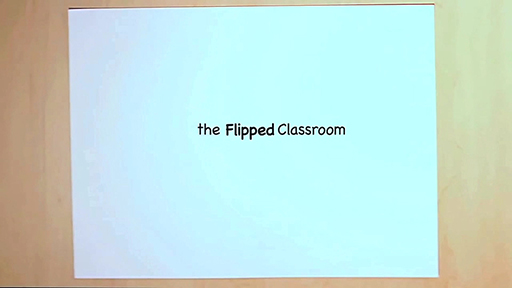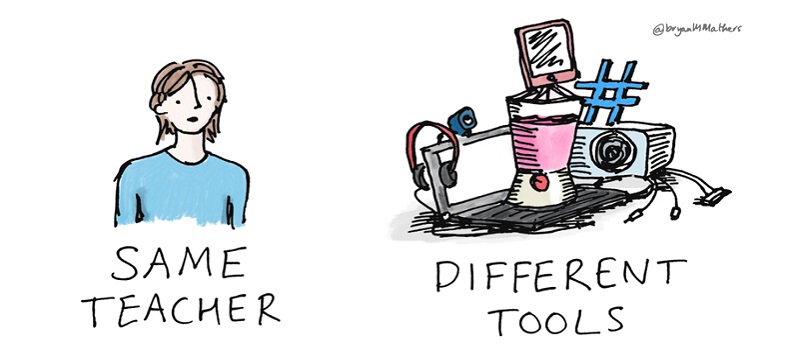2.1 Flipped classrooms
‘Flipped classrooms’ utilise the blended learning model to reverse the traditional learning environment such that the learners receive the bulk of the instructional content online. Learners would, for example, be asked to understand and process a set of material in their own time and at their own pace. This would take the place of more traditional post-class ‘homework’ tasks. The classroom sessions are then used for interactive discussion and exploration of the topic with the teacher, which takes the place of the more traditional instructional scenario. Hence the type of activities undertaken in each context is the reverse of what is usual. The class has ‘flipped’ to be the space for students and teachers to be more active, engaging with each other in a more personalised and focused way. The online environment then becomes the home for the more traditional lecture-style teaching.
Activity 3 Thinking about the flipped classroom
This video synthesises the benefit of a flipped classroom approach.
Watch the video and note down three benefits of the flipped classroom over a traditional approach.

Discussion
This activity is intended to introduce you to the concept of the flipped classroom approach, and to help you to identify the benefits it may have in your own context.
The benefits suggested for the flipped classroom approach include the ability for students to work through materials at a pace that suits them, and a reduction in boredom for students who are finding the material easier. The teacher can spend class time addressing individual needs.
There is a wider theme that can be found in this video and elsewhere in this course. This is the way that the role of a teacher can change in response to a change in approach using technology. In the case of the flipped classroom, the teacher is seen to become more of a ‘coach, mentor and guide’, rather than acting primarily to deliver knowledge. You might see this as a benefit, depending on your point of view on what the role of a teacher should be!
Now that you’ve been introduced to some of the unique aspects of online teaching, the differences between synchronous and asynchronous elements, the possibilities of blended learning and the notion of the flipped classroom, the next activity prompts you to reflect on your own practice and how it might fit with what you have learned so far.
Activity 4 Starting to build your plans for teaching online
This activity asks you to reflect upon what it is that you would like to achieve in terms of online teaching. Now that you have read a little about the basics of teaching online, think about what your goals are in this area. You may not have specific goals in mind yet. If you don’t, simply focus on one course that you teach and consider how it might be moved wholly or partially online. Note down answers to the following questions if you can:
- What course(s) do you want to deliver online? Do you aim to transfer online a small or substantial element of what you currently deliver face-to-face? Will you move entirely online or create a blended approach? Will you use synchronous or asynchronous activities – or both? Might a flipped classroom approach be appropriate?
- To whom do you want to deliver the learning experience? What level of digital skills do your intended learners have? What level of experience with online learning is likely amongst your intended learners? What support might your learners need to make a successful transition to online learning?
- What resources do you already have that you might be able to repurpose for online learning?
Record your responses below and, if you wish, in your own journal as you will revisit them later in this course.
Discussion
This is the first in a series of activities that appear throughout this course, helping you to develop a plan for taking your teaching online. This first step will give your plans a starting point. You may find it helpful at this stage to keep a range of options available, perhaps listing several ideas for each point. You could narrow these down to a single plan a little later.
2 Blended learning
